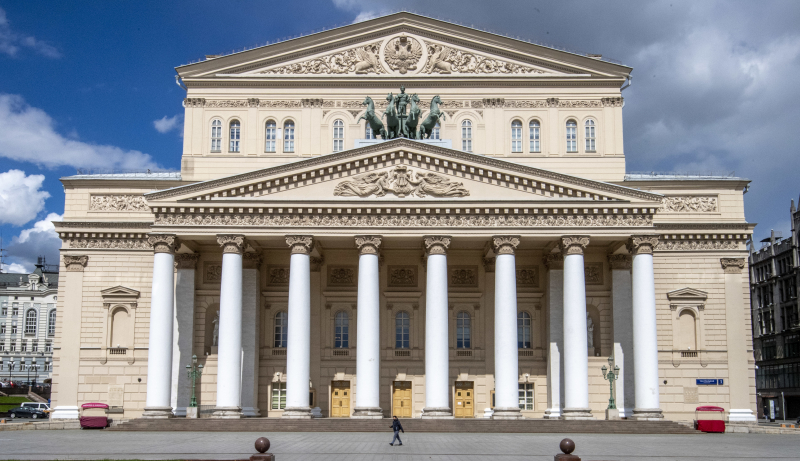The Bolshoi Theatre
The Bolshoi Theatre is a historic ballet and opera house in Moscow, Russia, originally created by architect Joseph Bové. It was a part of the Imperial Theatres of the Russian Empire before the October Revolution, along with the Maly Theatre (Small Theatre) in Moscow and a few theatres in Saint Petersburg (Hermitage Theatre, Bolshoi (Kamenny) Theatre, afterward Mariinsky Theatre, and others).
The Bolshoi Ballet and Bolshoi Opera are two of the world's oldest and most well-known ballet and opera organizations. With over 200 dancers, it is by far the largest ballet group in the world. The Bolshoi Ballet Academy, a leading ballet school, is the parent company of the theatre. It has a branch in Joinville, Brazil, at the Bolshoi Theater School.
The theatre's main building, which has been rebuilt and remodeled multiple times over its history, is a Moscow and Russian landmark (its famous neoclassical façade is portrayed on the Russian 100-ruble banknote). After a six-year refurbishment, the Bolshoi reopened on October 28, 2011. The renovation is expected to cost 21 billion rubles ($688 million). However, some Russian authorities and individuals associated with it alleged that significantly more public money was wasted. The repair involved restoring the original acoustics (which had been destroyed during the Soviet era) as well as recreating the Bolshoi's historic Imperial decor.
The Bolshoi Theater's productions can be watched on three stages: the Historic Stage, the New Stage, and Beethoven Hall. Furthermore, they have just begun to employ the Boris Pokrovsky Chamber Stage. The Bolshoi's greatest source of pride is its historic stage. The opulent furnishings of the tsars' days, as well as the exceptional acoustics, can be found here. Only a ticket to the historic stage will allow you to visit the theatre's main building. The tickets for the old stage, on the other hand, are the most expensive.
Location: Teatralnaya Square 1, Tverskoy District, Moscow, Russia











